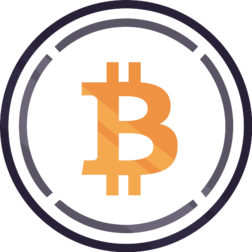Solana (SOL) is a high-performance, decentralized blockchain platform designed to support fast, scalable, and secure decentralized applications (dApps) and cryptocurrencies. Solana’s unique architecture and consensus mechanisms make it one of the most popular blockchain platforms in the crypto space, offering a high transaction throughput and low fees. Here’s a detailed overview of Solana:
1. What is Solana (SOL)?
- Solana is a decentralized blockchain platform that aims to provide fast and scalable solutions for decentralized applications and cryptocurrencies. It was created by Anatoly Yakovenko in 2020, with a focus on improving blockchain speed and scalability without compromising decentralization or security.
- SOL is the native cryptocurrency of the Solana network, used for transaction fees, staking, and governance on the platform.
2. How Does Solana Work?
- Proof of History (PoH): One of the key innovations of Solana is its Proof of History consensus mechanism. PoH is a cryptographic technique that helps establish the order of transactions in the blockchain, which drastically reduces the time needed for validators to reach consensus.
- Proof of Stake (PoS): In combination with PoH, Solana uses Proof of Stake to achieve consensus across its network. Validators are chosen to confirm transactions based on the number of SOL tokens they stake, which ensures security and reduces energy consumption compared to Proof of Work (PoW) systems like Bitcoin.
- Transaction Speed: Solana’s unique architecture allows for a high throughput, processing thousands of transactions per second (TPS), significantly higher than Ethereum or Bitcoin.
- Scalability: Solana’s blockchain can handle high transaction volumes without sacrificing speed or incurring high transaction costs, making it an ideal platform for applications requiring scalability.
3. Key Features of Solana (SOL)
- Fast Transaction Speeds: Solana is known for its incredibly fast transaction speeds, with the network capable of processing over 65,000 transactions per second (TPS). This makes it one of the fastest blockchains in the crypto space.
- Low Transaction Fees: Solana’s network is optimized for low-cost transactions, with fees generally under a penny per transaction, even during high network activity.
- High Throughput: Solana can handle many transactions simultaneously, which ensures its scalability and makes it suitable for large-scale decentralized applications (dApps) and DeFi protocols.
- Decentralized: Despite its high scalability and speed, Solana remains a decentralized network with a distributed set of validators securing the blockchain.
4. How to Use Solana (SOL)
- Decentralized Finance (DeFi): Solana is home to a growing ecosystem of decentralized finance (DeFi) applications. These include decentralized exchanges (DEXs), lending platforms, and yield farming protocols.
- Non-Fungible Tokens (NFTs): Solana is also a popular platform for minting and trading NFTs. Its fast transaction speeds and low fees make it an attractive alternative to Ethereum for creators and collectors.
- Smart Contracts and dApps: Solana supports smart contracts, which allow developers to build decentralized applications (dApps) that run on its blockchain. These applications can span various industries, from finance to gaming to supply chain management.
- Gaming: Solana’s scalability and speed make it ideal for gaming platforms where users can trade in-game assets and interact with the blockchain in real-time.
5. Advantages of Solana (SOL)
- Scalability: Solana can process thousands of transactions per second, making it highly scalable for both small and large applications.
- Low Fees: Solana’s blockchain is designed to maintain very low transaction fees, even during periods of high network congestion, making it an attractive option for developers and users.
- Fast Transactions: Solana’s transaction confirmation times are extremely fast, allowing for near-instant transactions, which is especially useful for applications like trading, gaming, and real-time interactions.
- Energy Efficiency: By using the Proof of Stake and Proof of History consensus mechanisms, Solana is more energy-efficient compared to Proof of Work blockchains like Bitcoin, which require significant computational resources.
6. Challenges of Solana (SOL)
- Network Stability: Solana has faced some network stability issues in the past, including downtime and occasional network outages due to high congestion. While improvements are being made, these issues have raised concerns among users and developers.
- Centralization Concerns: Although Solana is technically decentralized, the high resource requirements for running a validator node have led to concerns about centralization. The network’s validators tend to be large organizations or well-funded entities, which may limit participation for smaller players.
- Competition: Solana competes with other smart contract platforms, particularly Ethereum, Cardano, and Polkadot, which have larger ecosystems and more established communities.
7. Solana (SOL) Price History
- 2020: Solana launched in 2020 with a price of around $0.77.
- 2021: Solana’s price surged dramatically in 2021, reaching an all-time high of over $250 in November 2021, driven by its increasing adoption for DeFi and NFTs.
- 2022-2023: The price of SOL has seen volatility, alongside broader market conditions, but Solana remains one of the top cryptocurrencies by market capitalization.
- 2024-2025: Solana’s price may continue to fluctuate as it expands its ecosystem and adoption, particularly with the growing popularity of its DeFi and NFT sectors.
8. How to Buy Solana (SOL)
- Cryptocurrency Exchanges: Solana (SOL) can be bought on most major exchanges, such as Binance, Coinbase, Kraken, Gemini, and Huobi.
- Peer-to-Peer (P2P): SOL can also be purchased from other individuals via peer-to-peer (P2P) platforms, allowing various payment methods like bank transfers or PayPal.
9. How to Store Solana (SOL)
- Hot Wallets: Software wallets such as Phantom, Sollet, or Solflare are designed specifically for Solana, allowing for easy storage and management of SOL tokens.
- Cold Wallets: For more secure storage, users can store SOL in hardware wallets like Ledger or Trezor, which offer offline storage and additional security features.
- Exchange Wallets: Solana can also be stored on exchanges such as Binance or Kraken, though it is generally safer to store cryptocurrency in personal wallets for long-term holding.
10. Solana’s Ecosystem
- Decentralized Finance (DeFi): Solana hosts many DeFi projects, including decentralized exchanges (DEXs), lending protocols, and yield farming platforms. Some popular Solana-based DeFi projects include Serum, Raydium, and Mango Markets.
- NFTs: Solana’s low fees and fast transaction speeds have made it a growing platform for NFTs, with projects like Solana Art and Metaplex gaining traction.
- Web3 Applications: Solana’s high scalability and low transaction fees make it a strong contender for Web3 applications, which require decentralized storage, identity management, and interactive features.
11. Solana’s Future
- Increased Adoption: Solana’s growing ecosystem and increasing adoption of DeFi and NFTs are likely to drive further interest in the platform.
- Network Improvements: Solana is continuing to improve its network stability, scalability, and decentralization. As the project develops, it is expected to address previous issues related to network downtime and validator centralization.
- Competition: As Solana competes with other smart contract platforms, it will need to continue innovating and offering superior scalability, low fees, and high throughput to maintain its position in the market.
- Partnerships and Ecosystem Growth: Solana’s growth will also depend on its ability to attract developers, establish partnerships, and expand its ecosystem of dApps, DeFi platforms, and NFTs.
Conclusion: Solana (SOL) is a high-performance blockchain platform that offers fast transaction speeds, low fees, and scalability, making it a strong contender in the decentralized application and cryptocurrency spaces. While it has faced some network challenges, its unique consensus mechanism and growing ecosystem make it a promising platform for developers, traders, and investors.





